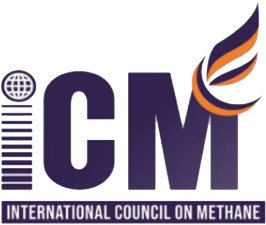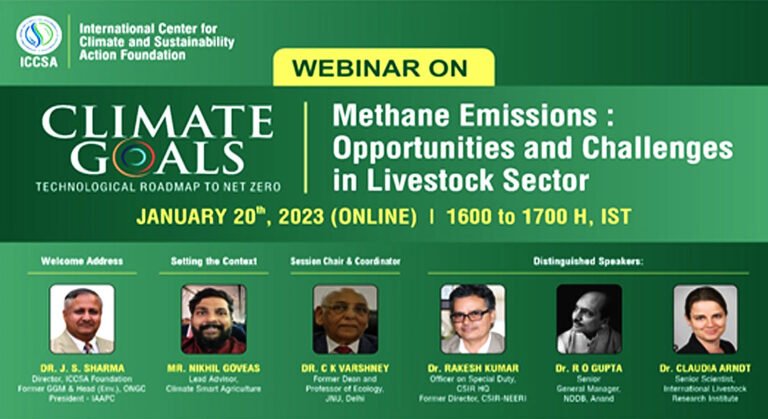ICCSA Foundation has organised an online webinar discussion on science and technological interventions, behavioural aspects and opportunities in methane emissions from agriculture and livestock sector:
Livestock
Implementing a combination of strategies tailored to specific farming systems and environmental conditions can contribute significantly to methane mitigation efforts in the livestock sector.
- Feed and Manure Management: Adjusting the composition and quantity of feed can help reduce methane emissions from livestock. Efficient manure management techniques, such as composting or anaerobic digestion, can also reduce methane emissions from manure.
- Methane Capture: Installing systems to capture methane emissions directly from livestock sources, such as barns or manure storage facilities, can prevent methane from being released into the atmosphere and can be used as a renewable energy source.
- Genetic Manipulation: Selective breeding or genetic modification of livestock can be aimed at reducing methane emissions while maintaining or increasing productivity. Traits such as feed efficiency and digestive processes can be targeted to achieve this goal.
- Ration Balancing: Formulating balanced diets, such as Total Mixed Ration (TMR), can optimize nutrient intake for livestock while minimizing methane emissions.
- Flexi Biogas Plants: Flexi biogas plants usage for collecting biogas produced from manure through anaerobic digestion not only provides renewable energy but also reduces methane emissions from manure storage.
- Use of Slurry as Organic Fertilizer: Applying livestock manure or slurry to agricultural land as organic fertilizer can improve soil health and fertility. This practice also sequesters carbon in the soil, potentially offsetting emissions elsewhere.
Agriculture
- Slow-release fertilizers and neem-coated urea: These help in better nutrient management, reducing the amount of excess nitrogen that gets converted into methane by soil microbes.
- Biochar in irrigated and acidic soils: Biochar can improve soil health and structure, reducing methane emissions by enhancing soil carbon sequestration and reducing the decomposition of organic matter.
- Microbial mitigation technology: Utilizing microbes that can out-compete methane-producing microbes in the soil can help in reducing methane emissions.
- Direct seeded rice, aerobic rice, and drip irrigation: These practices can reduce the amount of waterlogged conditions in rice fields, which are conducive to methane-producing anaerobic bacteria.
- Alternate wetting and drying of fields: This method involves periodically allowing fields to dry out between irrigation cycles, which can significantly reduce methane emissions from rice paddies.
- Capturing methane from rice fields: Methane capture systems, such as floating covers or perforated pipes installed in rice paddies, can capture methane emissions and convert them into usable energy, mitigating their environmental impact.






